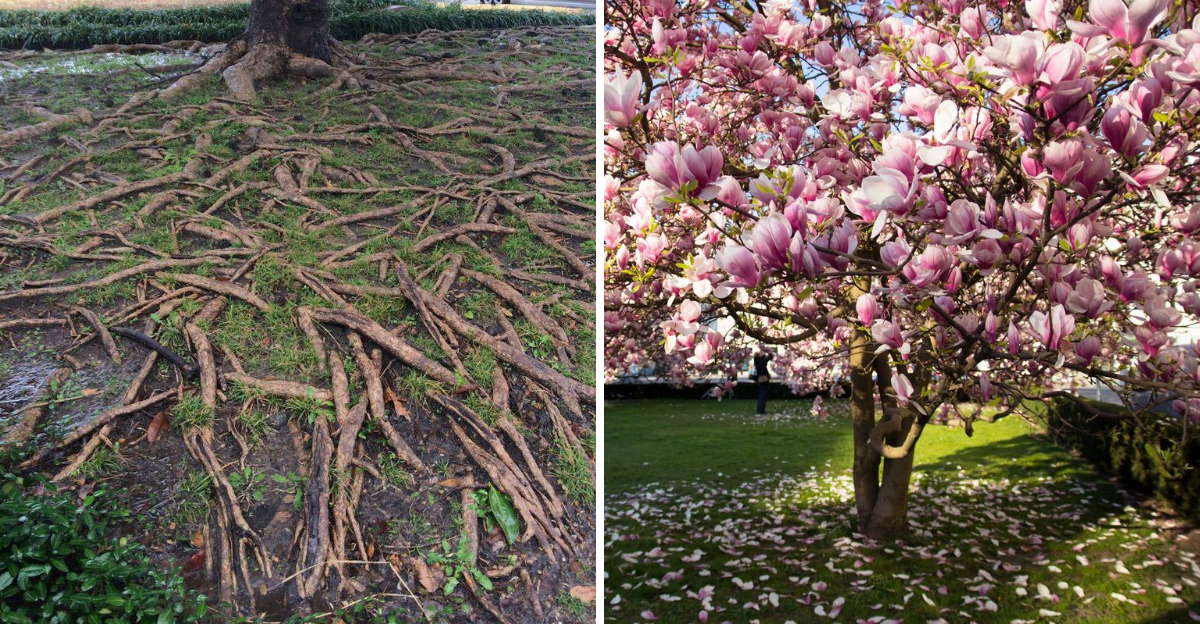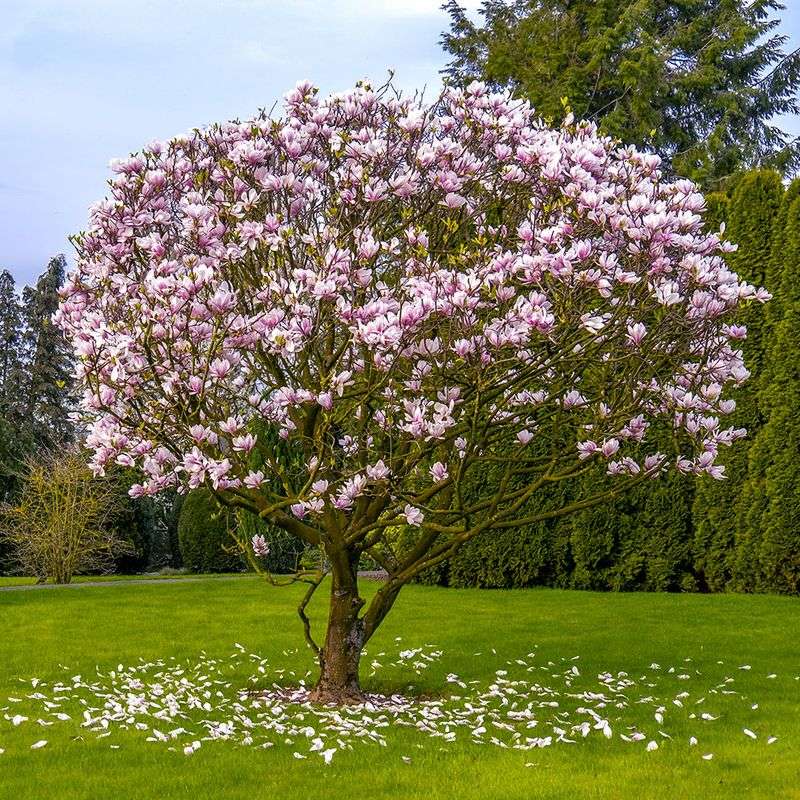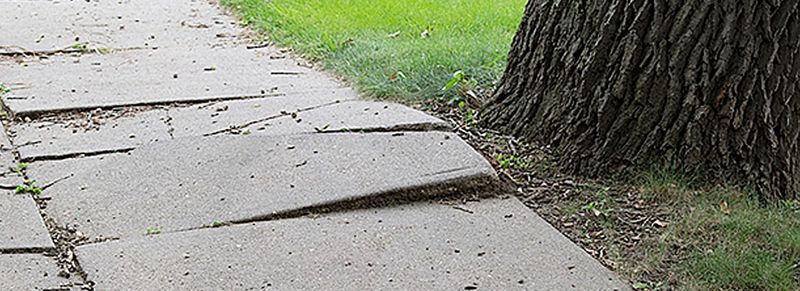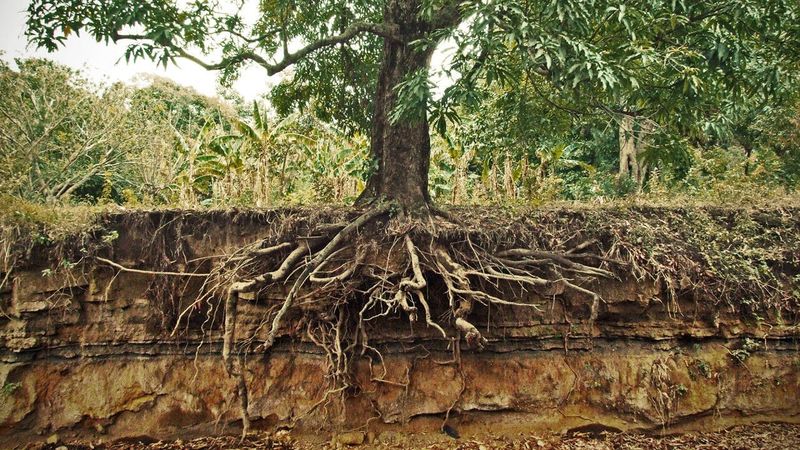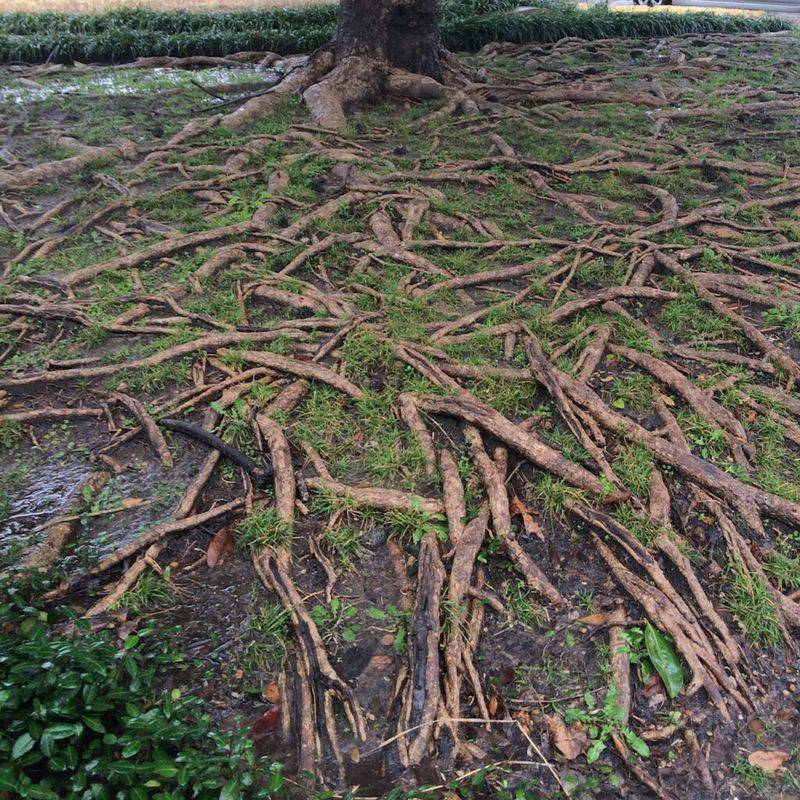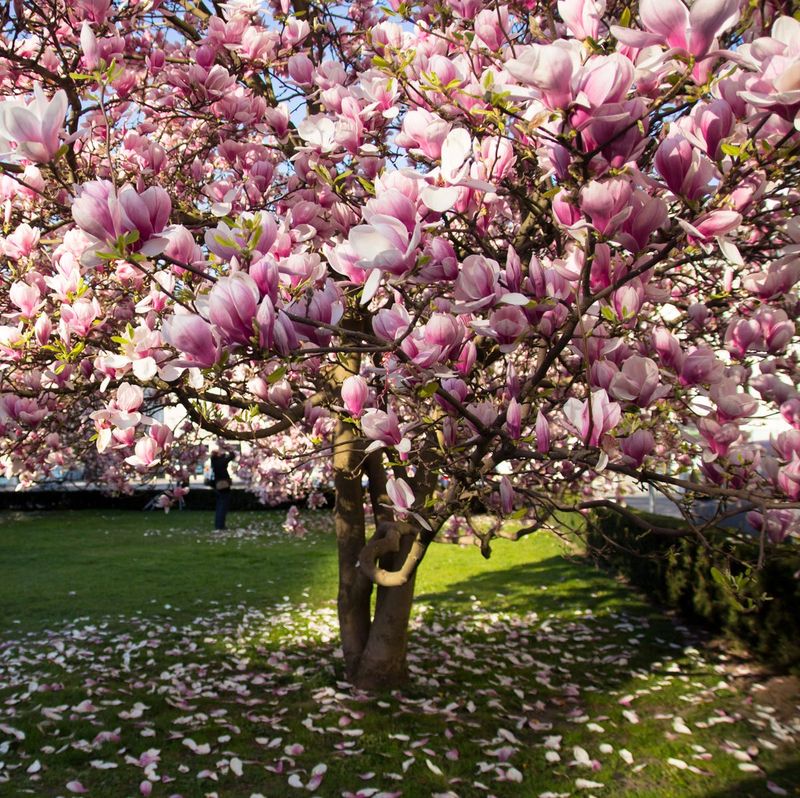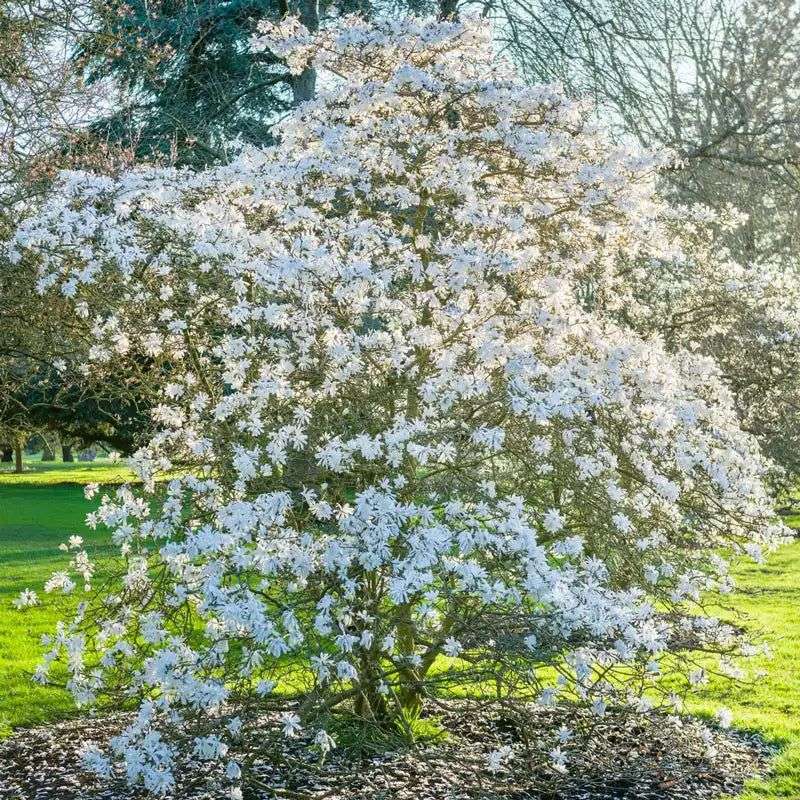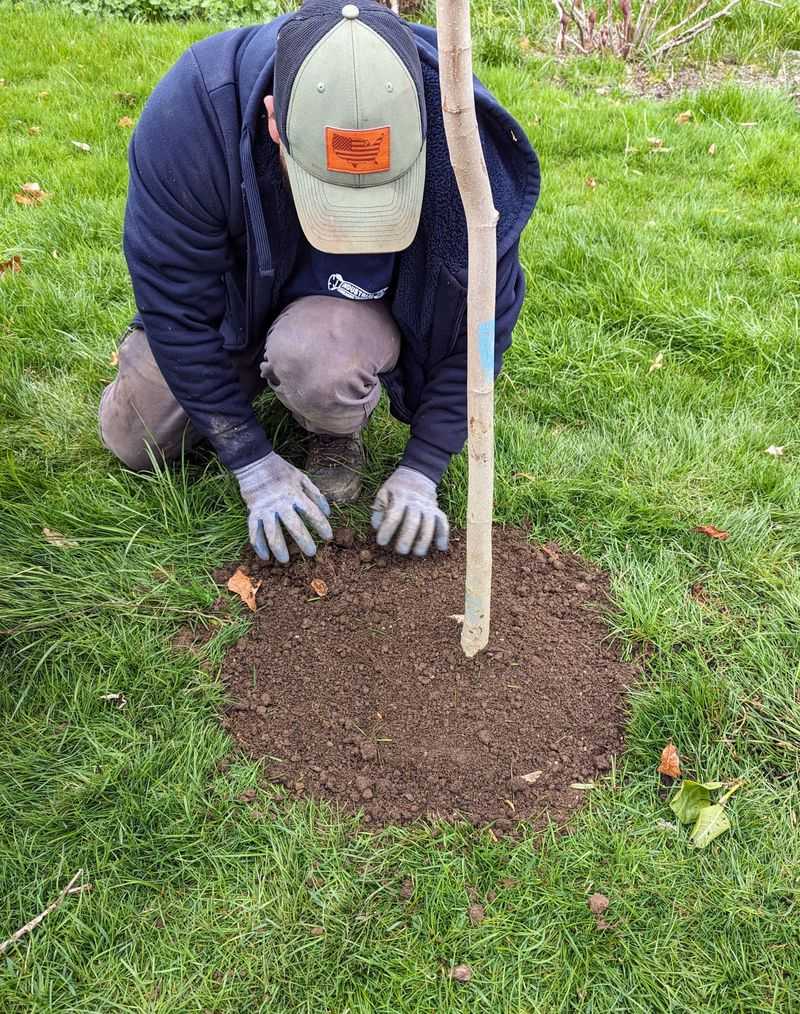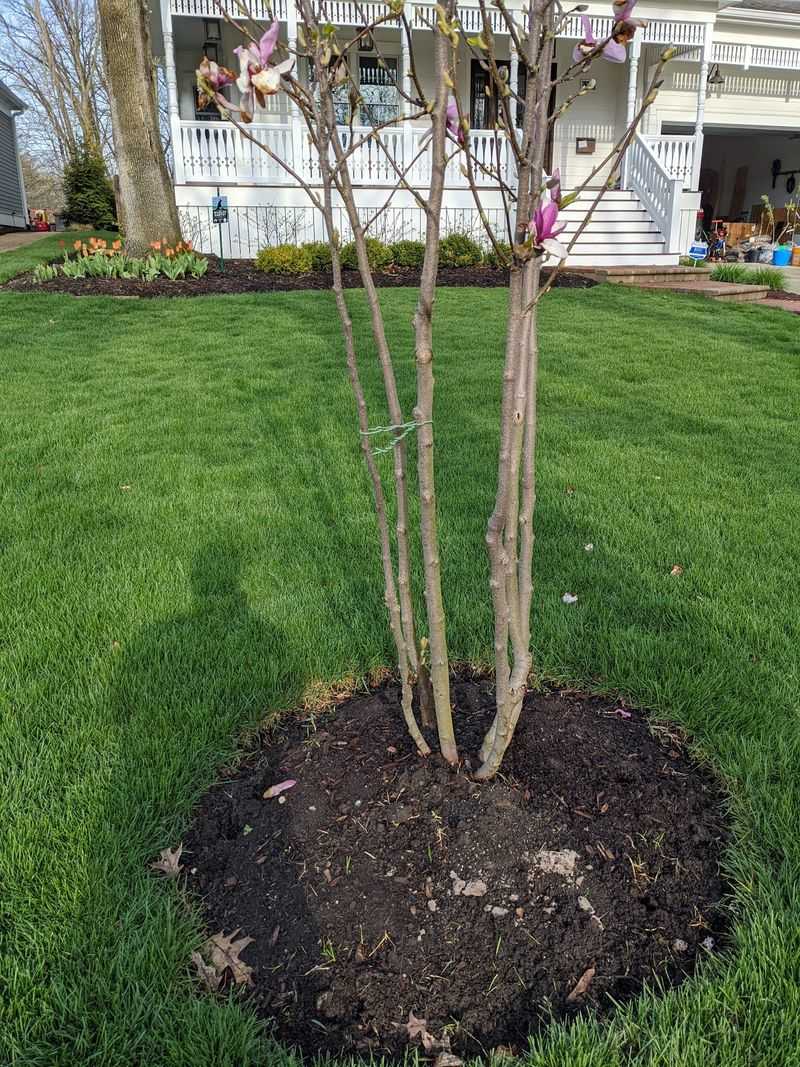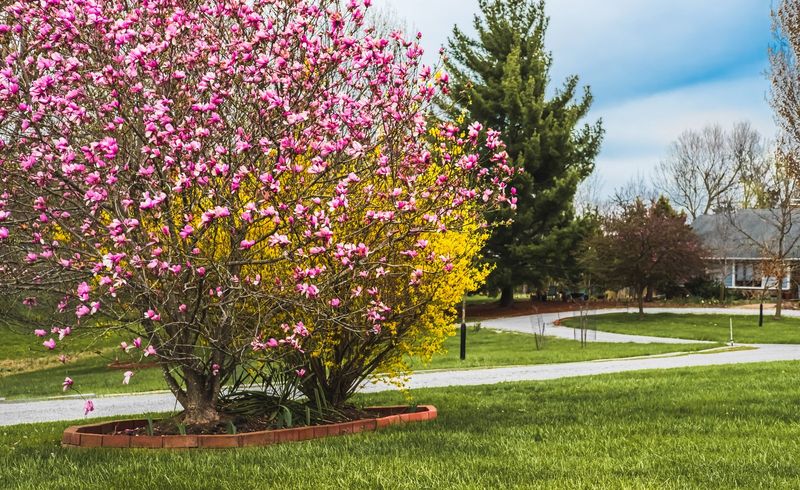Magnolia trees captivate with their stunning blossoms, yet their roots can stir up a mix of admiration and concern.
Whether you’re a tree enthusiast or a homeowner planning your next garden project, understanding these roots can make all the difference.
Let’s explore the fascinating world of magnolia roots, uncovering both their beauty and potential challenges.
1. Shallow, Wide-Spreading Roots
Magnolia trees are known for their shallow, wide-spreading roots that often extend far beyond the tree’s canopy. This unique root architecture allows them to access nutrients across a broad area. However, it can also mean encountering roots where you least expect them. For gardeners, this may spell trouble for nearby plants vying for the same space. Imagine walking through a garden, only to find roots peeking out like hidden tentacles. The sight can be mesmerizing yet challenging, requiring careful planning when planting alongside other flora.
2. Not Technically Invasive, But…
While magnolia roots aren’t classified as invasive like bamboo or willow, they still pose potential risks. Their determined growth can lead to disruptions if planted too close to sidewalks, foundations, or pipes. Consider the magnolia’s gentle yet powerful presence—a tree that respects boundaries but knows no restraints when it comes to spreading out. Homeowners should be mindful of where they plant these elegant beauties. Though not aggressive, their roots have a way of appearing where they’re least desired, subtly shifting the landscape.
3. Surface Roots Can Be Problematic
Magnolia roots staying close to the surface can lead to problems like lifting pavement or becoming a tripping hazard. Picture a sunny suburban street lined with magnolias, their roots gracefully arching above the ground. It’s a scene straight out of a storybook until you stumble upon an unexpected root. Such surface roots not only affect aesthetics but also the safety of the area. They can compete fiercely with nearby plants for water and nutrients, leaving homeowners to find a delicate balance between beauty and practicality.
4. Roots Seek Moisture
Magnolia roots are natural moisture seekers, aiming to find the nearest water source. Imagine these roots as thirsty travelers, always on the lookout for the next oasis. If planted near septic systems, sewer lines, or irrigation systems, they could cause serious trouble. The allure of moisture is irresistible to them, leading to potential invasions of water infrastructure. This quality makes them both fascinating and a bit of a menace for those unaware. Planning their location carefully can prevent unwanted encounters with your plumbing.
5. Give Them Space
Giving magnolia roots the space they need can save a lot of headaches down the line. Experts recommend planting large magnolia species at least 15–20 feet away from any structures to prevent interference. Imagine this majestic tree standing proudly in an open area, free to stretch its roots without constraint. Such thoughtful placement not only benefits the tree but also preserves the integrity of surrounding structures. It’s a dance between nature and architecture, ensuring harmony and coexistence in your garden or yard.
6. Dwarf and Smaller Varieties Are Safer Near Structures
Dwarf and smaller magnolia varieties, like Magnolia stellata or the ‘Little Gem,’ offer a safer option for those with limited space. These varieties have less aggressive root systems, making them suitable for small yards or urban environments. Visualize a quaint yard with a charming Magnolia stellata, its roots quietly contained. This allows homeowners to enjoy the beauty of magnolias without the worry of root interference. These compact trees prove that size doesn’t always dictate impact, offering elegance in a manageable package.
7. Magnolia Roots Prefer Loose, Well-Drained Soil
Magnolia roots thrive in loose, well-drained soil, avoiding compacted environments. This preference leads them on a journey through the earth in search of nutrients and air, especially in challenging clay conditions. Envision a garden with rich, crumbly soil where magnolia roots weave effortlessly. Such an environment allows them to flourish without hindrance, promoting healthy growth. Gardeners can enhance this by ensuring proper soil conditions, making magnolias a vibrant addition to any landscape. With the right foundation, these trees offer timeless beauty.
8. Root Pruning Is Tricky and Risky
Pruning magnolia roots is a delicate task that comes with significant risks. Imagine a skilled gardener, tools in hand, approaching this challenge with caution. The roots are the lifeline of the tree, and any interference could result in severe damage. It’s a process that requires precision and understanding of the tree’s needs. Root pruning should only be considered when absolutely necessary to avoid harming the majestic magnolia. It’s a reminder of the delicate balance in nature, where even the smallest snip can have lasting effects.
9. Use Mulch to Protect Surface Roots
Mulching around the base of a magnolia tree can help protect delicate surface roots. Picture a garden where mulch forms a cozy blanket over the roots, offering moisture retention and protection from the elements. This simple act provides numerous benefits, from reducing exposure to enhancing the tree’s growth. Mulch acts as a guardian, supporting the roots as they remain close to the surface. It’s a practical solution that marries aesthetics with functionality, ensuring magnolia trees can thrive without compromise.
10. Consider Location Before Planting
Planning the perfect location for a magnolia tree is crucial for long-term success. Visualize a gardener, map in hand, contemplating the ideal spot for their magnolia, considering its potential size and impact. This foresight is vital as these trees grow slowly but can eventually become massive. The right location ensures the tree’s health and prevents future damage to structures or landscapes. It’s a strategic decision that rewards with years of beauty and minimal headaches. Choosing wisely today means enjoying the splendor of magnolias tomorrow.
